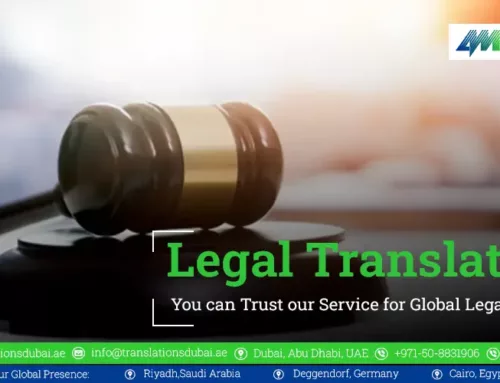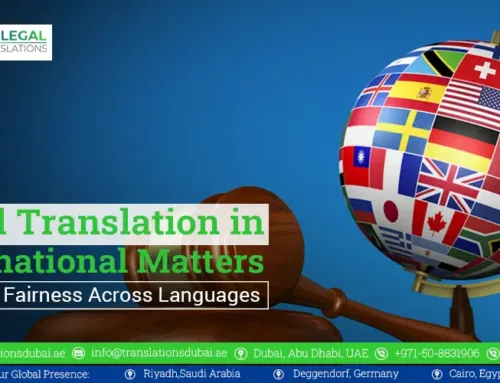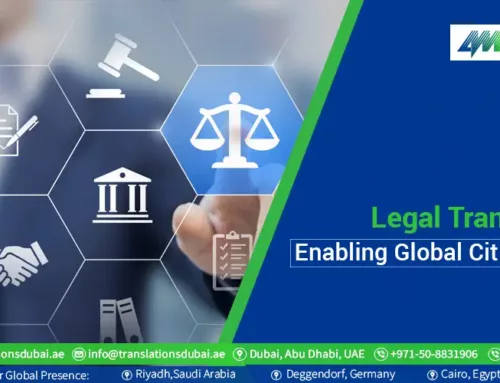When moving to a new country, the process can be pretty intricate. One crucial aspect of this journey involves translating legal documents for immigration purposes. These documents play a significant role in obtaining visas and navigating the immigration process smoothly. To ensure a seamless transition, accurate legal translation is paramount.
In this blog post, we’ll be exploring the complexities of legal translation for immigration, discussing why accuracy matters, and providing tips for ensuring accuracy in visa and immigration documents. So, let’s dive in and get started!
Why Accuracy is Crucial in Visa and Immigration Documents
Immigration documents, such as visa applications, birth certificates, marriage licenses, and criminal record checks, must often be submitted in the official language of the country you’re moving to.
Accurate translation is essential because mistakes or misinterpretations could lead to delays, rejection, or legal issues. Precise translation ensures the information is presented correctly and all parties can understand the content accurately.
Common Challenges in Legal Translation for Immigration
Professional translation for immigration documents can present challenges that make accuracy difficult.
1. The Complexity of Legal Language
One common challenge is the complexity of legal language. Immigration documents often contain specialized legal terminology and complex sentence structures that can be difficult to translate accurately. Translators need to deeply understand of both the source and target languages and the legal systems of both countries involved.
2. Cultural Adaptation
Another challenge is the need for cultural adaptation. Migration documents often contain references to cultural practices and legal concepts that may not have a direct equivalent in the target language. Translators must navigate these cultural nuances to ensure accurate and culturally appropriate translations.
3. Time Constraints
Time constraints can also be a challenge. Immigration processes often have tight deadlines, requiring translators to work quickly without sacrificing accuracy. This can be incredibly challenging when dealing with lengthy documents requiring meticulous attention to detail.
4. Ensuring Consistency
Lastly, ensuring consistency is another common challenge. Migration documents often consist of multiple forms and supporting materials that must be translated consistently. This requires careful attention to terminology, style, and formatting.
Addressing these challenges requires experienced and skilled legal translators familiar with the complexities of migration documents. By understanding and overcoming these challenges, accurate translations can be achieved, ensuring the successful navigation of the immigration process.
The Importance of Hiring a Professional Legal Translator
When it comes to legal translation for migration documents, hiring a professional legal translator is of utmost importance. These documents hold significant weight, and any inaccuracies or errors can have serious consequences. An experienced legal translator has the necessary language skills, cultural knowledge, and legal expertise to ensure accurate translations.
They understand the complexities of immigration documents and can navigate the specialized legal terminology and cultural nuances involved. By entrusting your translation needs to a professional, you can have peace of mind knowing that your visa and migration documents will be accurately translated, reducing the risk of complications in the immigration process.
Tips for Ensuring Accuracy in Legal Translation for Immigration
Accurate translation for immigration documents is crucial for a successful immigration process. To ensure accuracy, here are some tips to keep in mind:
1. Hire a Professional Legal Translator:
A qualified and experienced legal translator is essential for accurate translations. They have the necessary language skills, cultural knowledge, and legal expertise to ensure accurate and culturally appropriate translations.
2. Provide Clear and Comprehensive Source Documents:
To minimize errors, it’s essential to provide the translator with clear and complete source documents. This includes all relevant forms, supporting materials, and additional context or explanations that can aid the translation process.
3. Maintain Consistent Terminology:
Consistency is vital in legal translation. Establish a glossary of key terms and ensure the same language is used consistently throughout the documents. This will help avoid confusion and ensure accurate translations.
4. Review and Proofread Translations:
After the translation is complete, thoroughly reviewing and proofreading the translated documents is essential. This includes checking for any mistranslations, inaccuracies, or formatting errors. A fresh pair of eyes can help catch any mistakes that may have been overlooked.
5. Seek Feedback and Clarification:
If you have any doubts or questions about the translation, feel free to seek input or clarification from the translator. Clear communication is essential to ensure accurate translations.
6. Avoiding Pitfalls
Mistakes in translation can have severe consequences. Even a minor error, such as a date or a name being inaccurately translated, can lead to confusion or denial of your immigration application. It’s essential to work with reputable translation services with a track record of accuracy and reliability.
By following these tips, you can ensure that your visa and immigration documents are accurately translated, reducing the risk of errors or complications in the immigration process. Accuracy is vital, so take the necessary steps to ensure your translations are reliable and precise.






